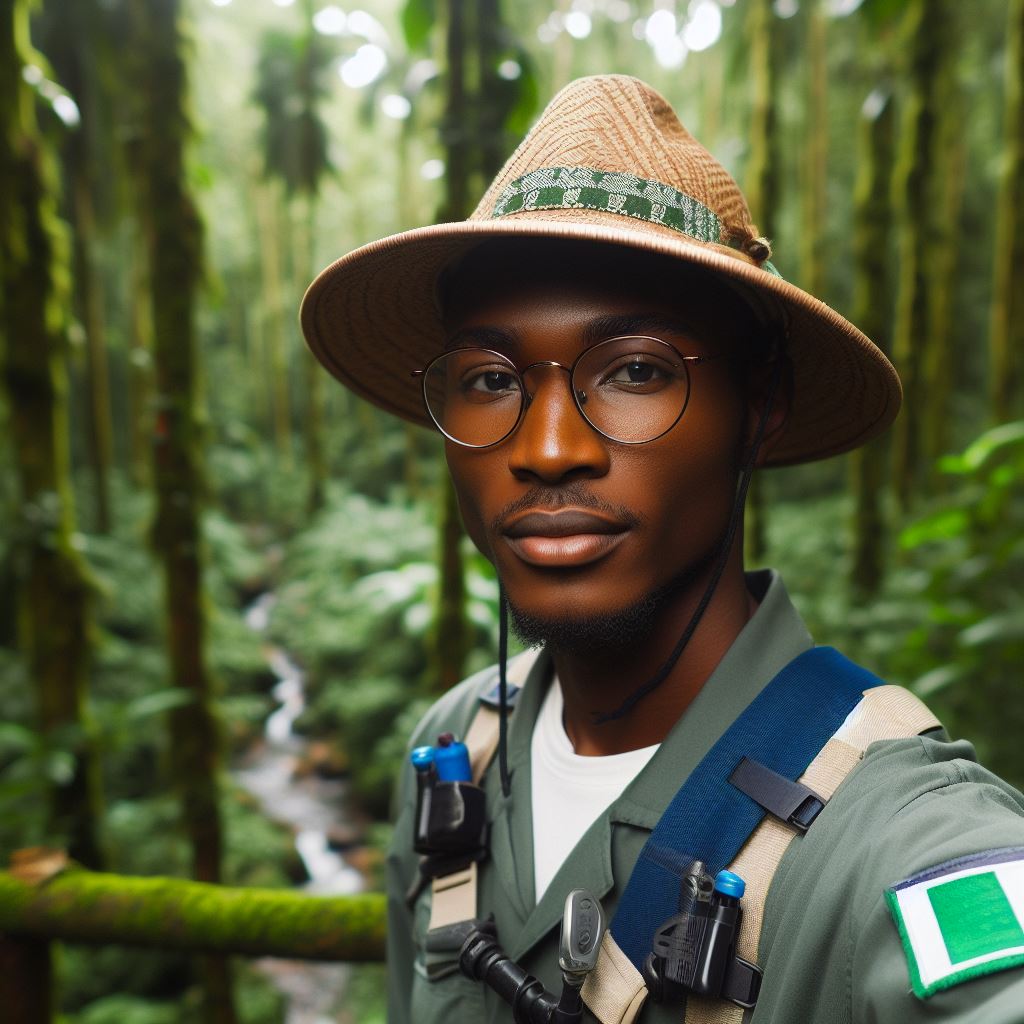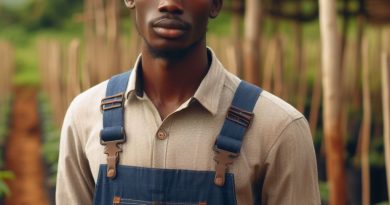Linking Traditional Conservation Methods with Modern Studies
Last Updated on December 15, 2023
Introduction
Traditional conservation methodologies symbolize a tapestry interwoven with cultural heritage and environmental stewardship.
Passed down through generations, these age-old practices encompass a profound understanding of ecosystems and the delicate balance within.
From the Amazon rainforests to the plains of Africa, indigenous communities have safeguarded biodiversity using traditional techniques.
These encompass a spectrum of practices, including agroforestry, seed saving, and land stewardship, fostering resilience against ecological threats.
The significance of these methods cannot be overstated. They not only sustain biodiversity but also preserve cultural identities.
Indigenous knowledge serves as a cornerstone for resilience against climate change and biodiversity loss.
However, the landscape of conservation is evolving.
Modern studies integrate scientific advancements, technological innovations, and interdisciplinary approaches.
These cutting-edge tools supplement and, in some cases, blend seamlessly with traditional practices.
The fusion of traditional wisdom with modern studies heralds a new era in conservation.
Remote sensing, genetic analysis, and data-driven models complement indigenous knowledge, offering comprehensive solutions to intricate environmental challenges.
This amalgamation is not a mere juxtaposition but a cohesive collaboration.
It respects and empowers indigenous communities, acknowledging their invaluable contributions while leveraging the prowess of modern science.
This section sets the stage for exploring the symbiosis between time-honored traditions and contemporary scientific approaches in conservation.
It elucidates the synergy between ancient wisdom and modern innovations, forging a path toward a more sustainable future.
Traditional Conservation Methods
Overview of traditional conservation practices in Nigeria
Traditional conservation methods have been practiced in Nigeria for centuries, resulting in the protection and preservation of the country’s natural resources.
These practices are deeply rooted in the indigenous knowledge and wisdom passed down from generation to generation.
Examples of traditional conservation methods
- Indigenous knowledge and practices: Indigenous communities in Nigeria have developed a deep understanding of their local ecosystems and have implemented conservation strategies that have
sustained the environment. - Use of sacred groves for conservation: Sacred groves, considered as religious sanctuaries, play a crucial role in conserving biodiversity by preserving ancient trees, plants, and wildlife.
These groves have become important cultural heritage sites. - Traditional farming techniques: Traditional farming methods, such as agroforestry and crop rotation, promote sustainable land use and ensure the long-term fertility of the soil.
These techniques help maintain biodiversity and prevent soil erosion.
Benefits and effectiveness of traditional conservation methods
Traditional conservation methods have proven to be highly effective in preserving Nigeria’s natural resources and biodiversity. Some key benefits include:
- Ecological sustainability: Traditional practices promote a balanced relationship between humans and the environment, leading to long-term ecological sustainability.
- Cultural significance: Traditional conservation practices are deeply intertwined with Nigeria’s rich cultural heritage, strengthening local communities’ connection to their land and traditions.
- Biodiversity conservation: Traditional methods have helped protect and preserve diverse flora and fauna, ensuring the survival of endangered species and maintaining ecological balance.
- Resilience to climate change: Traditional practices have shown resilience to climate change impacts by promoting sustainable resource management and adaptation strategies.
- Community empowerment: Traditional conservation practices often involve community participation, fostering a sense of ownership and pride in protecting natural resources.
It is important to recognize and integrate traditional conservation methods into modern studies and conservation efforts as they present valuable knowledge and practices that can complement scientific research.
By combining indigenous wisdom with scientific advancements, a holistic and comprehensive approach to conservation can be achieved, ensuring the sustainability of Nigeria’s natural heritage for future generations.
Read: Best Nigerian Universities for Ecotourism & Wildlife Studies
Modern Studies in Conservation
Overview of modern studies in conservation
Modern studies in conservation focus on integrating traditional methods with new approaches.
They aim to find sustainable solutions to environmental issues and preserve biodiversity.
These studies involve interdisciplinary collaboration among scientists, researchers, and local communities.
They explore the relationships between humans and the environment, considering social, economic, and cultural factors.
The goal is to balance conservation efforts with the needs of the people and promote environmental stewardship.
Scientific research and advancements
Modern studies in conservation heavily rely on scientific research and technological advancements.
Scientists use advanced tools and techniques to understand ecosystems, species, and their interactions.
They conduct field surveys, collect data, and analyze it to draw meaningful conclusions.
Additionally, genetic studies help in understanding the genetic diversity and evolutionary history of species.
Furthermore, modern studies utilize satellite imagery and remote sensing to monitor habitat changes and deforestation.
Integration of technology in conservation efforts
Technology plays a vital role in enhancing conservation efforts and monitoring biodiversity.
Camera traps and drones enable researchers to monitor wildlife populations and behavior.
GPS tracking devices help in tracking animal movements and studying migration patterns.
Furthermore, data modeling and simulations assist in predicting the impact of climate change on ecosystems.
Modern studies also leverage social media and online platforms to raise awareness and engage the public in conservation.
Overall, modern studies in conservation bring a new dimension to traditional conservation methods.
They combine scientific research, technological advancements, and community engagement to achieve sustainable conservation goals.
By integrating traditional knowledge with modern approaches, these studies provide a holistic understanding of the environment and enable effective conservation strategies.
It is through these collaborative efforts that we can ensure the long-term well-being of our planet and its precious biodiversity.
Read: Lab Work & Equipment in Nigerian Toxicology Departments
Linking Traditional Conservation Methods with Modern Studies
Recognizing the value of traditional knowledge
Traditional conservation methods have been passed down through generations, offering unique insights into the natural world.
These traditional practices have proven effective in preserving ecosystems and sustaining biodiversity.
Recognizing the value of this knowledge is crucial for the advancement of modern conservation efforts.
Traditional knowledge can provide a holistic approach, considering not just the ecological aspect but also cultural and spiritual dimensions.
By acknowledging and respecting traditional conservation methods, society can learn from indigenous communities’ time-tested practices.
Building upon traditional practices with scientific research
Science can enhance traditional conservation methods by providing empirical evidence and new insights.
Modern studies can help validate the effectiveness of traditional practices and identify areas for improvement.
For example, scientific research can contribute to understanding the ecological mechanisms behind traditional methods.
By combining traditional knowledge with scientific research, conservation efforts can be strengthened and more efficient.
Moreover, the scientific approach can contribute to the documentation and dissemination of traditional practices to a broader audience.
Collaboration between traditional practitioners and modern conservationists
Effective conservation strategies require collaboration between traditional practitioners and modern conservationists.
The exchange of knowledge and experiences between the two can lead to innovative and sustainable solutions.
Traditional practitioners bring ecological wisdom, cultural perspectives, and intimate knowledge of local environments.
Modern conservationists bring scientific expertise, technological advancements, and access to global networks.
Through collaboration, the strengths of both traditional and modern approaches can be combined for greater conservation impact.
Case studies highlighting successful integration of traditional and modern methods
There are numerous case studies that demonstrate successful integration of traditional and modern conservation methods.
One example is the Batak tribe in the Philippines, who have been using traditional farming practices to protect forests.
With the help of modern studies, they have been able to optimize their methods to promote forest regeneration and sustainable agriculture.
Similarly, in Australia, indigenous communities have collaborated with scientists to manage and restore biodiversity in their ancestral lands.
These case studies highlight the inherent value of linking traditional and modern approaches in conservation efforts.
They demonstrate that combining traditional wisdom with scientific research can yield effective and sustainable solutions.
Read: Benefits of Studying Ecotourism in Nigeria Today

Challenges and Opportunities
Potential challenges in linking traditional and modern conservation practices
- Limited recognition of the value of traditional conservation methods in modern scientific communities.
- Resistance from local communities to adopt modern conservation practices due to cultural or economic factors.
- Lack of trust or communication barriers between traditional knowledge holders and scientific researchers.
- Difficulties in integrating traditional and modern techniques due to differences in approach and terminology.
- Insufficient funding and resources to support collaborative efforts between traditional and modern conservation practices.
Addressing misconceptions and biases related to traditional methods
- Educating the scientific community about the wealth of information and sustainable practices found in traditional knowledge.
- Showcasing successful case studies where traditional and modern conservation practices have been effectively combined.
- Engaging with local communities and involving them in the decision-making process to address concerns and build trust.
- Promoting cultural sensitivity and awareness to overcome biases towards traditional practices.
- Providing scientific evidence to support the effectiveness of traditional conservation methods.
Opportunities for knowledge sharing and cross-cultural collaboration
- Creating platforms for dialogue and exchange between traditional knowledge holders and modern scientists.
- Establishing partnerships and collaborations that respect and value both traditional and modern conservation practices.
- Incorporating traditional knowledge into scientific research and conservation programs.
- Developing joint projects that integrate traditional and modern techniques to enhance conservation outcomes.
- Supporting capacity building initiatives that empower local communities and traditional knowledge holders.
Opportunities for bridging the gap between indigenous wisdom and scientific advancements
Despite the challenges, linking traditional conservation methods with modern studies opens up exciting opportunities for bridging the gap between indigenous wisdom and scientific advancements.
By recognizing and addressing the potential challenges, we can pave the way for a more inclusive and holistic approach to conservation.
Embracing traditional knowledge allows us to tap into centuries of wisdom about sustainable resource management and harmonious coexistence with nature.
The benefits of combining traditional and modern approaches are numerous.
Traditional conservation practices often emphasize the interconnectedness of all living beings and promote harmony between humans and the environment.
This comprehensive perspective can enhance the effectiveness of modern conservation efforts, which tend to focus on specific elements or species.
Furthermore, merging traditional and modern knowledge can lead to innovative solutions for today’s complex conservation challenges.
Traditional methods, such as agroforestry or community-based conservation, have proven to be successful in maintaining biodiversity and ecosystem functions.
Integrating these approaches with cutting-edge technologies and scientific insights can unlock new possibilities for sustainable development and conservation.
Overall, the key to successfully linking traditional and modern conservation practices lies in fostering collaboration, understanding, and mutual respect.
By valuing the contributions of both traditional knowledge holders and modern scientists, we can harness the strengths of each approach and create a more comprehensive and effective conservation strategy for the future.
Read: Field Work: The Core of Toxicology Studies in Nigeria
Conclusion
Importance of Bridging Traditional Conservation Methods with Modern Studies
The integration of traditional conservation methods with modern studies is of utmost importance.
By incorporating indigenous knowledge and practices into current conservation efforts, we can create comprehensive and sustainable approaches.
Traditional methods have stood the test of time and have proven to be effective in preserving ecosystems and biodiversity.
Moreover, combining traditional and modern approaches can lead to a deeper understanding of ecological processes and more efficient conservation strategies.
Encouragement for Further Research and Implementation of Integrated Approaches
It is crucial to encourage further research and implementation of integrated approaches in conservation.
By conducting studies that actively combine traditional and modern knowledge, we can improve our understanding and effectiveness in safeguarding our natural resources.
Scientists and conservationists should collaborate with indigenous communities to bridge the gap between academic research and traditional practices.
This collaboration can lead to the development of innovative conservation strategies that respect and integrate traditional wisdom with scientific advancements.
By embracing diversity in knowledge systems, we can create a more holistic and inclusive approach to conservation.
Call to Action for Supporting and Preserving Traditional Knowledge and Practices in Conservation Efforts
We must recognize the value and importance of supporting and preserving traditional knowledge and practices in conservation.
Indigenous communities often hold invaluable knowledge about their local ecosystems, which is essential for effective conservation.
Efforts should be made to respect, protect, and empower indigenous communities, ensuring their active participation in conservation initiatives.
Providing financial and technical support to help preserve and promote traditional practices is essential in maintaining their relevance and efficacy.
Ultimately, by bridging traditional conservation methods with modern studies, we can achieve more sustainable and culturally sensitive conservation outcomes.


